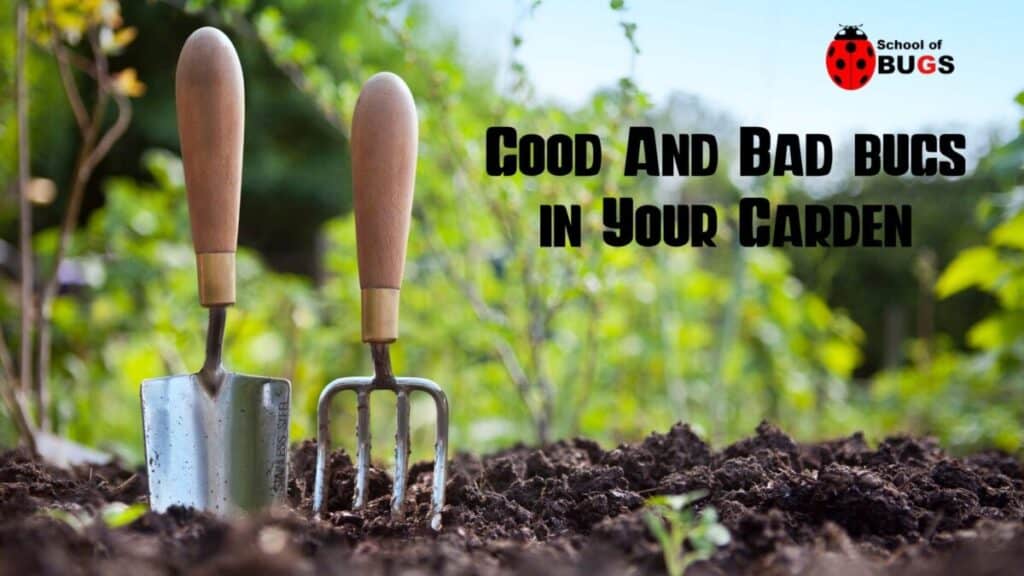
A garden can be a beautiful and useful thing to have in your backyard, but if it’s ridden with harmful pests, all of your hard work will become worthless in no time.
That’s why we’ve compiled this guide to understand which bugs are beneficial and which ones are disadvantageous in a garden.
We’ll be exploring the following topics in further detail and speaking about how the “good” bugs help to get rid of the pests.
- Gardens can benefit from bugs like spiders, beetles, bees, and praying mantids.
- Ladybugs are some of the most beneficial insects to have in a garden.
- Bugs such as aphids, spider mites, caterpillars, and Japanese Beetles are generally harmful to a garden.
- Slugs are some of the most detrimental bugs to have in your garden.
Good Bugs in Your Garden
When it comes to bugs that your garden can benefit from, the main contenders are going to be bugs that pollinate plants and/or prey on the “bad” bugs.
Without pollinators, flowers and fruiting plants like vegetables would struggle to survive.
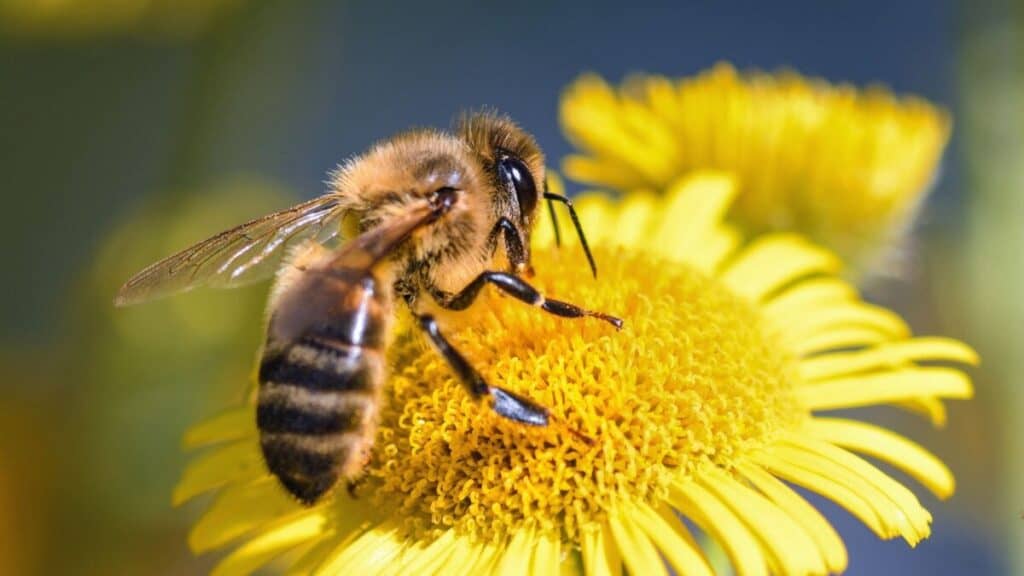
And without predator insects to eat pests such as aphids, mites, and certain types of worms, the pests would overpopulate.
Pests can end up laying eggs on plant tissue and suck the sap out of tissue, which leads to oviposition damageand, potentially, the eventual death of a plant.
Thankfully, there are “good” bugs to come to the rescue. And with knowledge of the plants they’re attracted to, you can bring them into your garden and let them do their good work.
Spiders
As much as people dislike spiders most of the time, certain ones are responsible for eating insects that would otherwise disrupt flower beds and veggie gardens.
According to Kansas State Research and Extension News, banded garden spiders and yellow garden spiders, in particular, are beneficial to a garden.
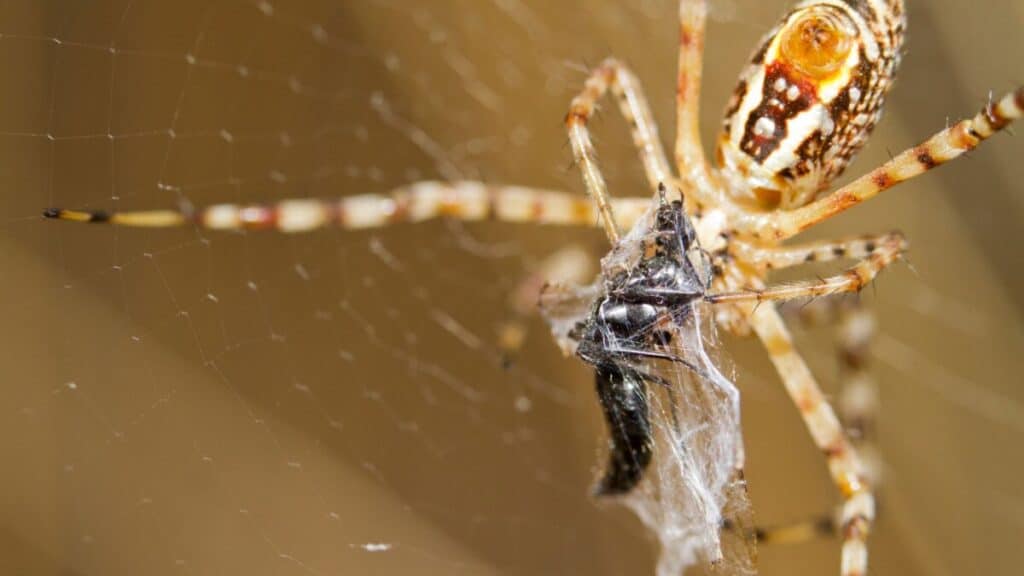
Here’s how they help:
- Banded Garden Spider – This striped, yellow/silver/black spider (15-25 mm) preys on paper wasps, mosquitos, grasshoppers, and cicadas in the summer months. These bugs would otherwise quickly eat up garden foliage or infest plants with eggs.
- Yellow Garden Spider – This easy-to-spot black and yellow spider (19-28 mm) is harmless to humans but great at trapping and getting rid of pests like mosquitos, aphids (responsible for stunting plant growth), and gnats (pesky to humans).

Soldier Beetles
Soldier beetles – also known as leatherwings – are good for your garden because they wait on plant blooms for unsuspecting prey like:
- Caterpillars – known for quickly taking over plants, eating large amounts of foliage and even woody plant matter
- Aphids – known for eating upon and yellowing plant leaves, leading to stunted growth and death
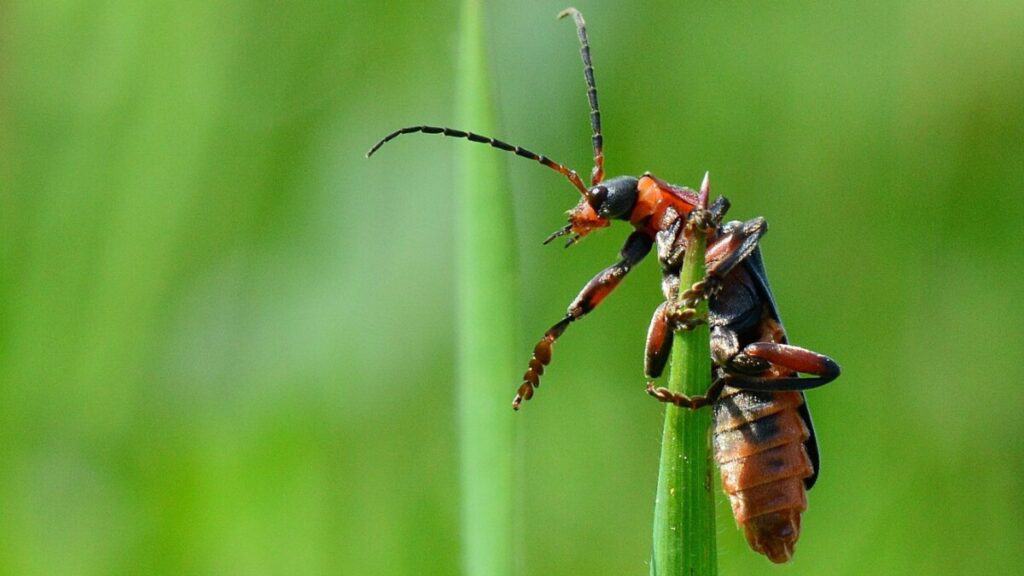
It’s also important to note that these red and black bugs do not cause harm to plants, flowers, or humans. They fly and crawl, but to identify them and distinguish them from lookalike wasps, you’d need to look for the two black markings on their backs.
Praying Mantis
While you might not spot this bug as often as the others, you can still rely on it to get rid of pests in your garden stealthily.
As its name implies, the praying mantis “preys” on the majority of the bad bugs in your garden, like grasshoppers, moths, caterpillars, certain beetles, and aphids.
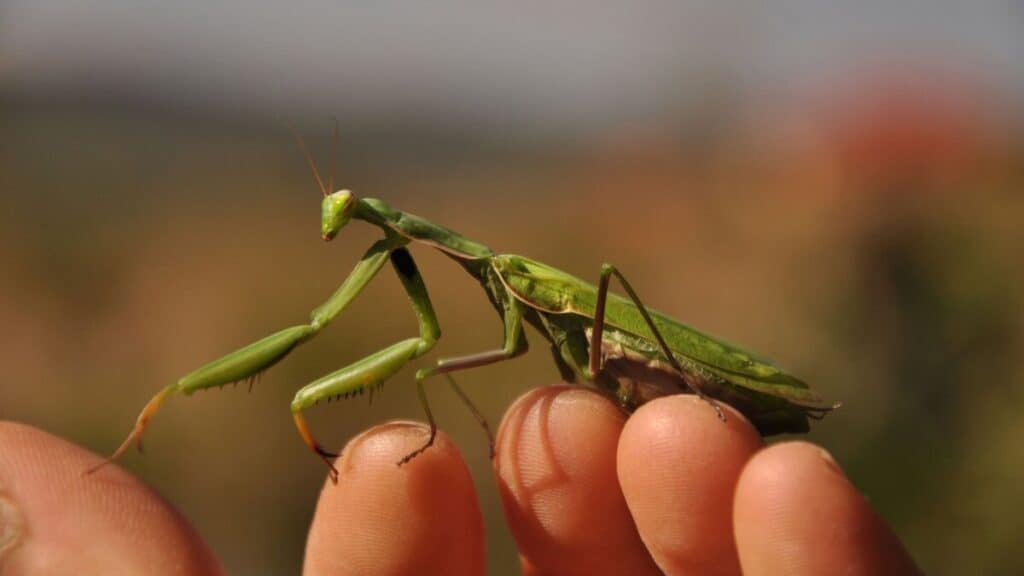
They are even known to eat mosquitos, which may not necessarily do so much damage to your plants as they will annoy you in your time spent in the garden.
You’ll likely see them most active in the late spring and summer months, depending on where you live.
Bees
Most people are aware that bees are essential to a well-functioning garden, but there are specific kinds to look out for. Primarily, you want native bee species, such as honeybees, bumblebees, and mason bees.
In particular, mason bees are very efficient pollinators, which makes them great for crop gardens with plants that require bee pollination (eggplants, cucumbers, squash, gourds, watermelon, pumpkins, etc.). Having them around helps to increase the fruit yield of these types of plants.
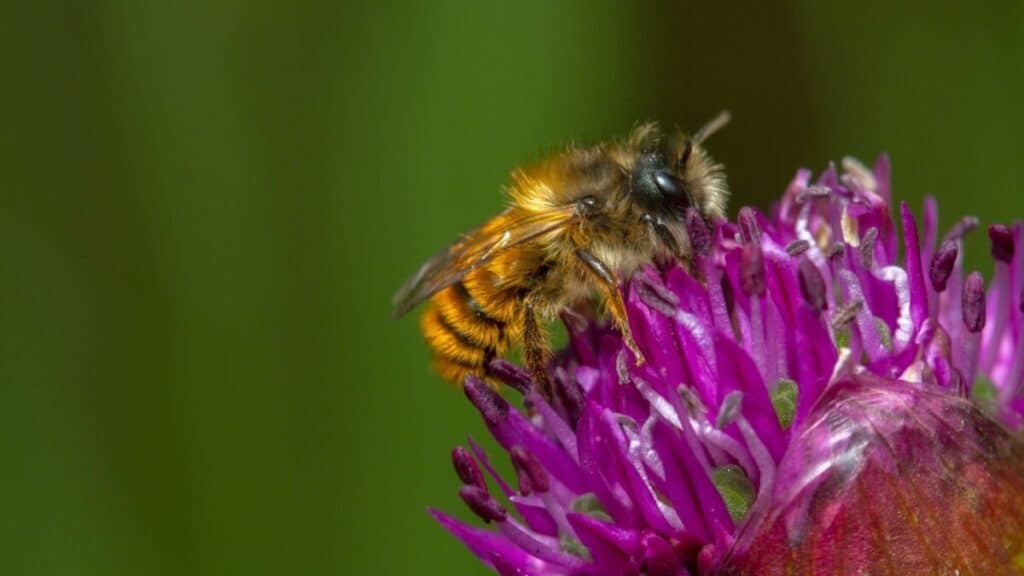
To attract more of these types of pollinator bees to your garden, plant flowers like zinnias, bee balm, cosmos, and lavender.
Conveniently enough, bees also have the ability to protect certain plants against disease and pests. They do so by depositing microbes (healthy bacteria) onto the plants.
Green Lacewings
Last but not least, a garden can greatly benefit from green lacewings. These little bugs with long antennae and slightly translucent wings are known for eating up large amounts of pests like mites and aphids in gardens.
In fact, they’re even sold to gardeners for this exact purpose – natural pest control.
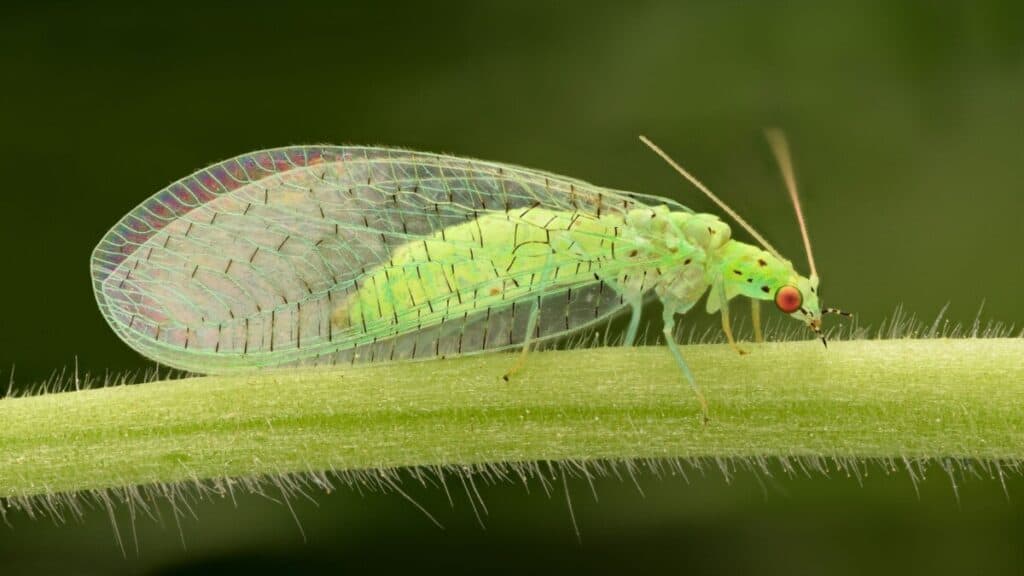
Green lacewings are primarily attracted to flowers such as cosmos, dandelion weeds, dill herbs, and other companion plants. So, having these in your garden can draw in the bugs to do their pest control work.
What’s the most beneficial bug in a garden?
While the above “good bugs” are great to have in your garden for pest control, plant protection, and improved pollination, we can’t forget to highlight ladybugs.
Ladybugs, in addition to being aesthetically pleasing, are also known predators in the bug world.
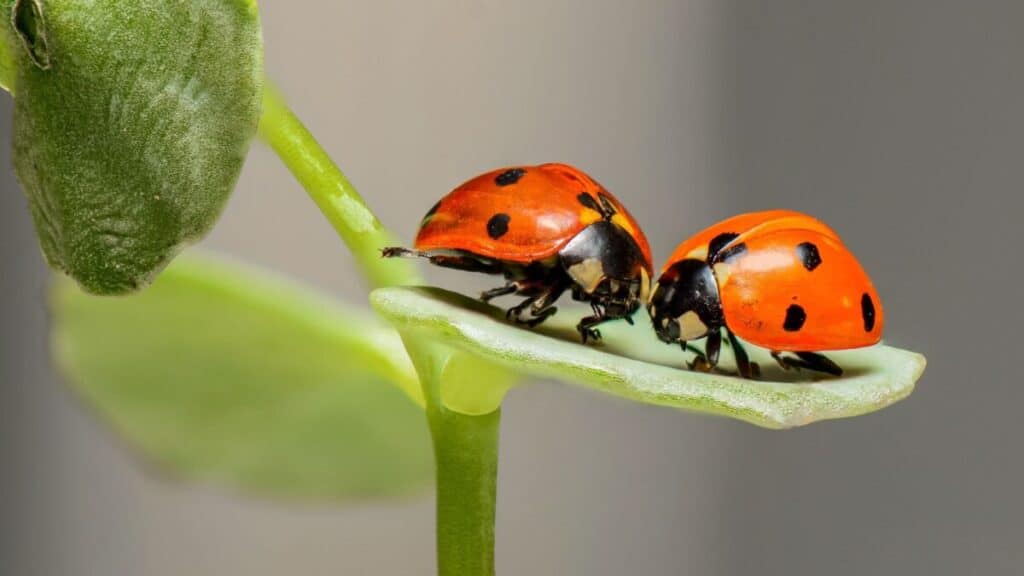
Ladybugs eat some of the worst pests in a garden, such as aphids, caterpillars, scale insects, spider mites, and even mealybugs.
They are super efficient when it comes to pest control. Take this statistic for reference – a single ladybug may eat thousands of aphids in its lifetime, according to UC Master Gardeners of Butte County, CA.
Note that you’ll only see them out and about in your garden in the warmer months – when temperatures stay primarily in the range of 60+ degrees F.
Bad Bugs in Your Garden
Although there are beneficial bugs that frequent home gardens, there is also a plethora of pests to be aware of.
Pests are bugs that feed on the sap, tissue, and other plant matter in gardens. And they often multiply quickly, leaving behind eggs and larvae in the garden, which can also act as pests.
Although certain good bugs, like bees and spiders, will naturally prey on these pests, intervention is sometimes still required to eradicate the infestations if they get out of control.
Japanese Beetles
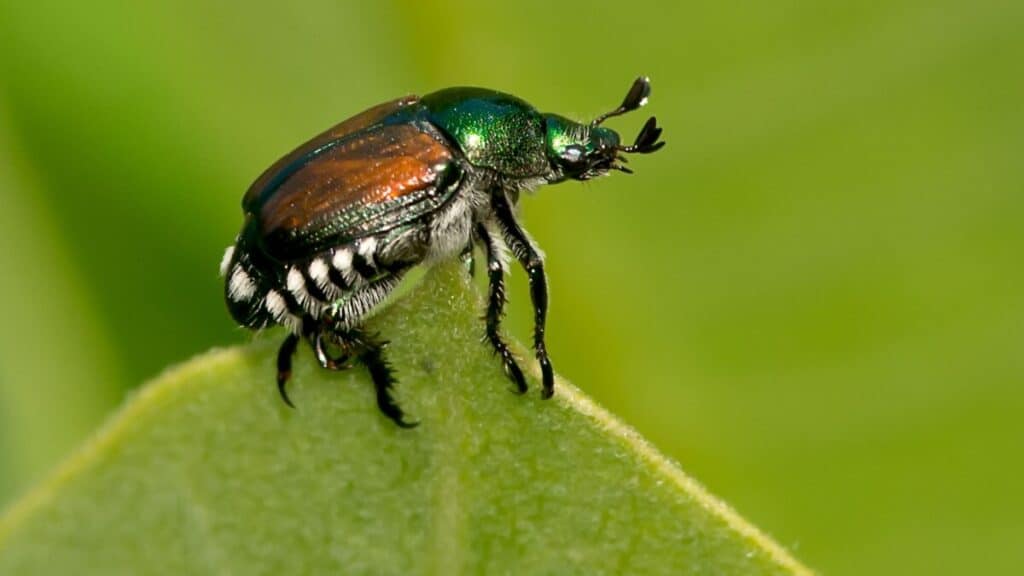
Japanese beetles are well-known pests and not too hard to identify in a garden, with their iridescent green heads and brown bodies.
They are bad bugs to have in a garden because they are invasive species in countries like the U.S., and they tend to eat almost every part of a plant.
In particular, they’ll feed on the fruit, flowers, and leaves of crop plants in veggie gardens, rose bushes, and some 300 other types of plants. Chances are, you have plants in your garden that will attract this pest.
What’s more, is that the young Japanese beetles known as “grubs” are notorious grass-killers. They feed on grass commonly found in residential yards, leading to browning and root damage to the grass.
Aphids
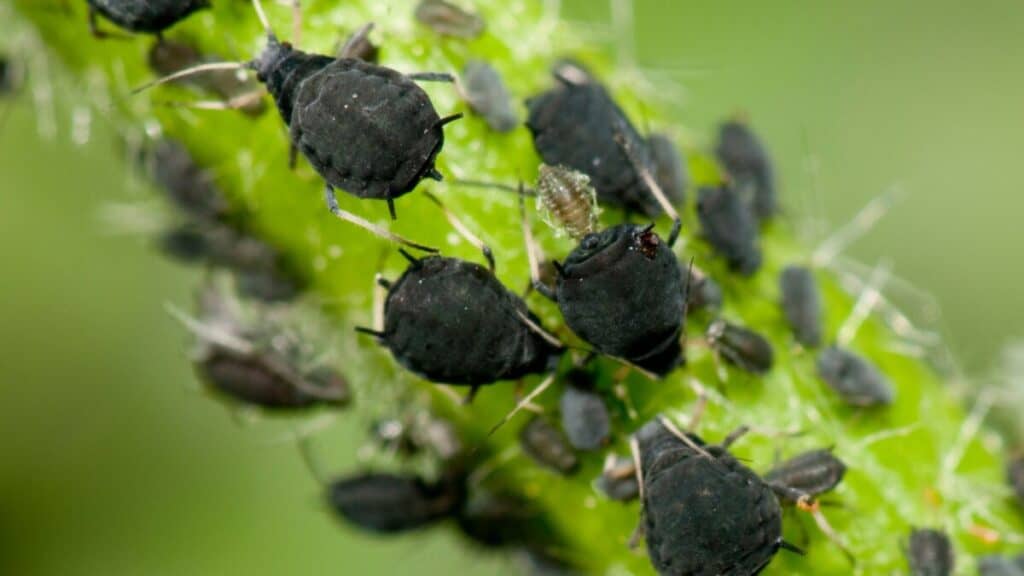
Aphids are some of the worst pests in a garden, and these super small bugs can quickly attach and infest certain plants.
If you grow vegetables, you’re likely to attract aphids to feed on the blooms, foliage, shoots, branches, and even the roots in some cases.
They mostly feed on the sap found inside plants, such as in plant tissue. To spot them, look out for small clusters or colonies of the bugs in colors like green, black, white, red, etc.
They often hatch in the spring months, and in a single reproduction period of about one month, a female can hatch up to 100 young.
Mites
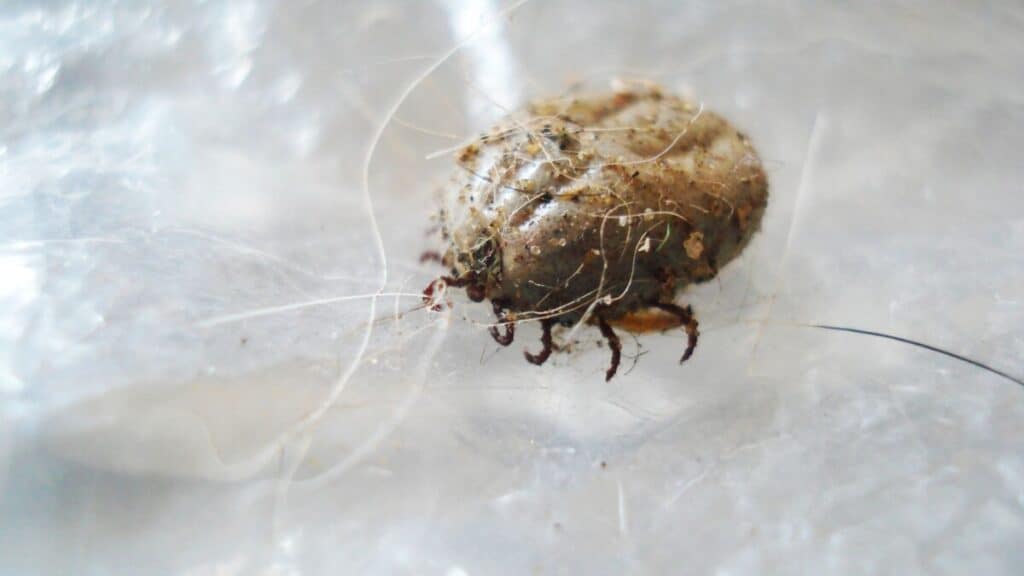
The thing about mite pests is that you may find them in your garden, in a greenhouse, and even on certain indoor plants.
Some of the peskiest mites are spider mites – small, detrimental pests that live clandestinely on the undersides of plant leaves. They feed on the cells of several hundred different types of plants.
Most often, though, they don’t discriminate as long as they have chlorophyll to feed on and plenty of light to live in.
Over time, the small punctures they make in plants lead to stunted growth, susceptibility to disease, and other issues.
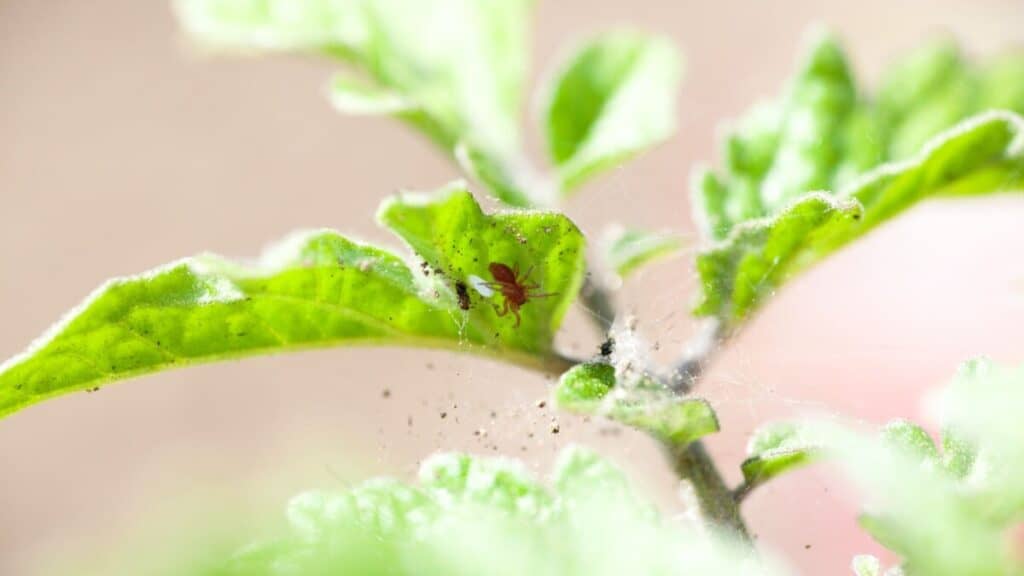
Some common varieties of spider mites include:
- Two-spotted spider mites
- Red spider mites
- Spruce spider mites
- Broad mites
Caterpillars
As cute as they are, caterpillars will wreak havoc on a garden by eating up foliage, woody plant matter like branches, blooms, and fruit in some cases.
It’s important to note that some caterpillar varieties are more detrimental than others, such as foliage-feeding caterpillars, cutworms, and borers (the worms of clearwing moths).
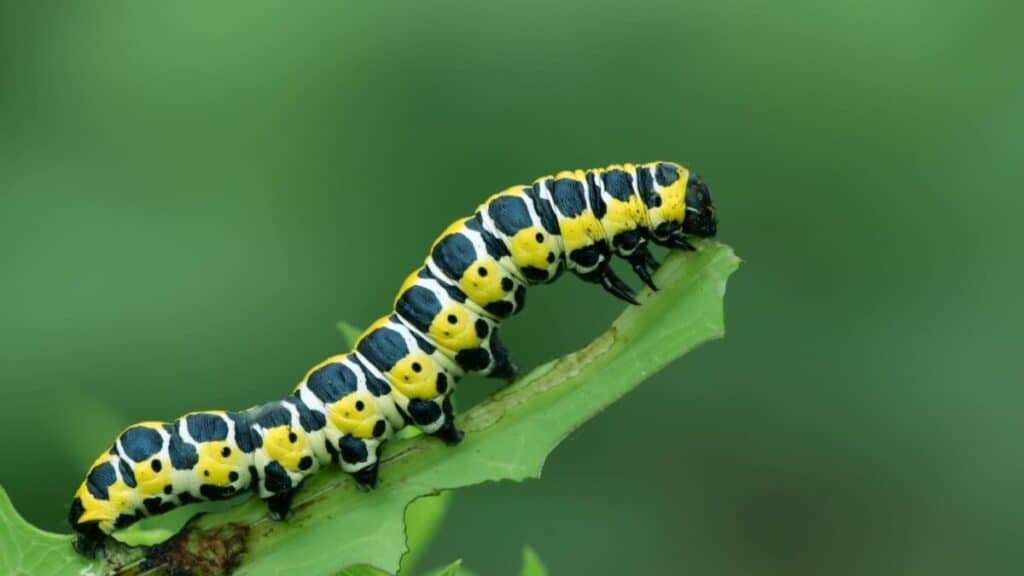
On the other hand, certain types of caterpillars will prey on pests like aphids, making them beneficial to a garden.
But because caterpillars grow so quickly and are herbivorous, they need lots of food to sustain them. This is why they can quickly take over plants and stunt the growth of a garden, leaving holes behind.
Kissing Bugs
Also known as conenose bugs, kissing bugs are harmful enough to both plants and humans to have earned the alias “vampire bugs”. Kissing bugs look a bit like stink bugs and can transmit Chagas disease to humans.
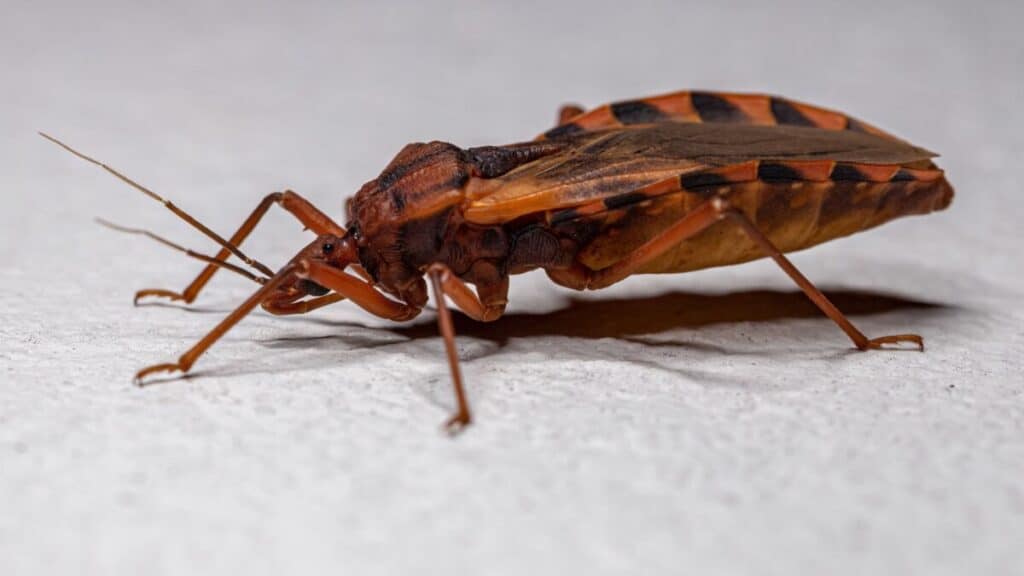
These mainly nocturnal feeders are known to bite humans on the skin around the mouth to feed on blood, attracted to the smell of carbon dioxide.
Some kissing bugs also suck the juices out of plant matter, making them a double threat in your garden.
What’s the worst bug in a garden?
The above pests are detrimental to most garden plants, but you can’t forget about one of the worst – slugs.
Slugs are particularly frustrating to crop gardeners who are just getting their plants started as seedlings since the bugs need to feed on succulent plant matter.
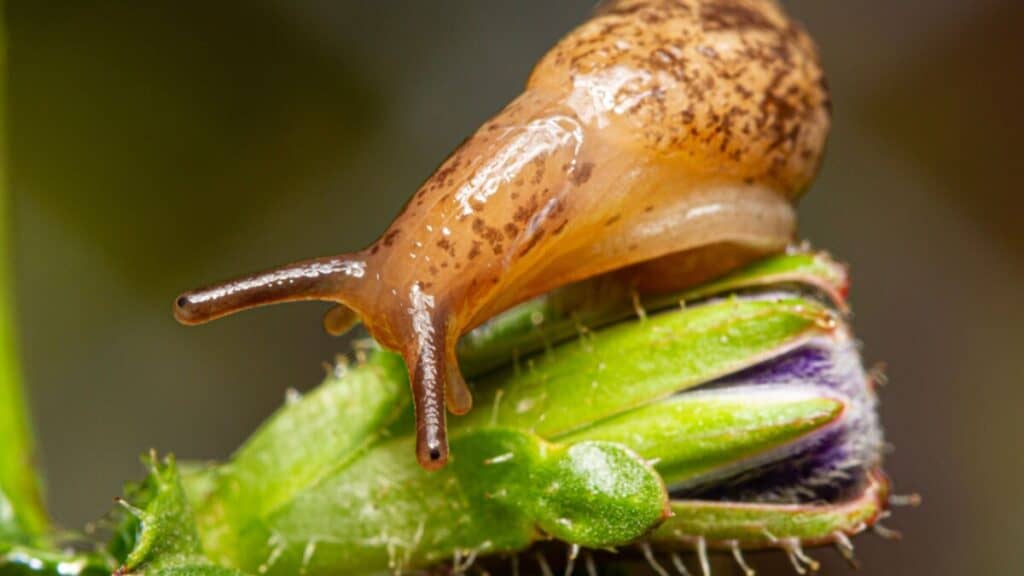
Slugs will even eat the fruit of plants because it is so succulent – especially fruit close to the ground like strawberries – as well as the leaves of brassicas like cabbage, broccoli, and kale.
Slugs are often worse in gardens that are overwatered or in regions where there is frequent precipitation.
Conclusion
There are both good and bad bugs in your garden, and they all have a role to play in the ecosystem. In particular, you can count on predatory and pollinator bugs like spiders, bees, praying mantids, and lacewings to eat pests and promote the growth of plants.
On the other hand, pests like aphids, spider mites, slugs, and caterpillars will do significant damage to plants, eating the sap and tissue quickly.
Make sure to refer to our guide to familiarize yourself with the types of plants you can use to attract more good bugs than bad ones.
Alright, that’s it for this article, here are a few hand-selected articles that you might also find interesting reads:
How to Keep Bugs out of Your Raised GardenHow Can I Kill Termites in the Garden without Harming Plants?
Everything You Need to Know About Bugs and Your Garden
Recent Posts
Tiny Black Bugs in Bathroom NO WINGS: What They Are and What to Do!
Finding tiny black bugs in your bathroom can be uncomfortable, to say the least. Especially if they are persistent, or they appear in very large numbers, which they often like to do. When it...
Tiny Black Bugs in Plant Soil - What Are They & What To Do About It
A short horror story: You get a new houseplant. You do your best to take care of it. You’ve ensured that it has the right soil, the right amount of sun, it gets enough water. And then one day, you...

